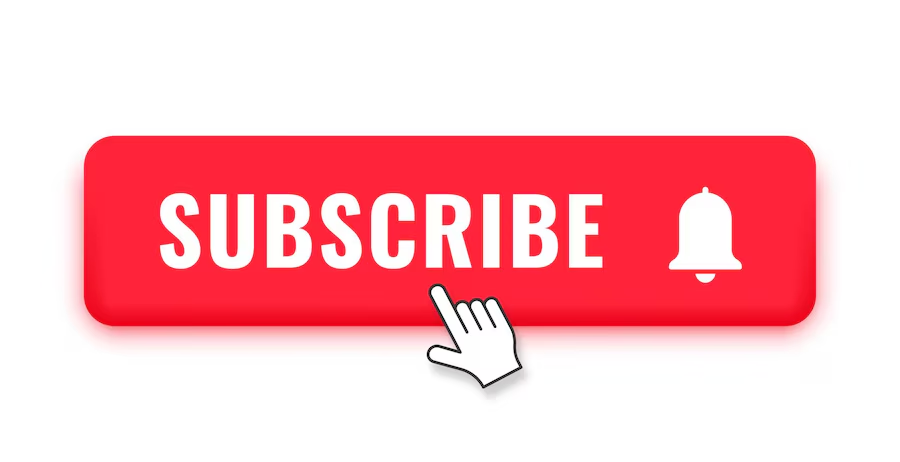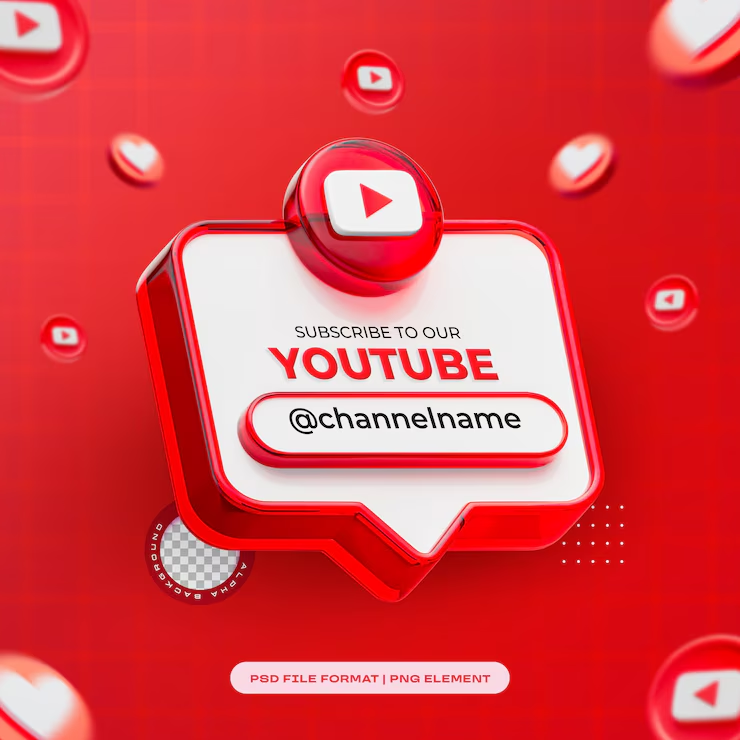How to Start a Successful YouTube Channel: A Step-by-Step Guide 2024

In today’s digital age, starting a YouTube channel has become a popular way to express creativity, share knowledge, and even earn an income. With billions of users watching millions of videos daily, YouTube channel offers a vast platform for individuals and brands alike. Whether you’re passionate about gaming, cooking, beauty, or travel, this guide will walk you through the essential steps to create a successful YouTube channel.
1. Identify Your Niche
Understanding Your Passion
Before diving into video creation, it’s crucial to identify your niche—what you’re passionate about and what you can consistently produce content on. Consider the following questions:
- What topics do you enjoy discussing?
- What hobbies do you have that could translate into videos?
- Are there areas where you have expertise or unique insights?
Researching Your Audience
Once you have a general idea of your niche, research your potential audience. Use tools like Google Trends, YouTube channel search, and social media to see what topics are trending and what viewers are interested in. Understanding your audience’s preferences can help you tailor your content accordingly.
2. Create a Content Plan
Brainstorming Video Ideas
With your niche defined, start brainstorming video ideas. Here are a few techniques to get your creative juices flowing:
- Trending Topics: Check out current trends in your niche on YouTube channel and social media.
- FAQ Videos: Address frequently asked questions in your area of expertise.
- How-To Videos: Create tutorials or how-to guides relevant to your niche.
- Challenges: Participate in or create challenges that relate to your interests.
Structuring Your Content
Once you have a list of ideas, consider structuring your content. A good structure can help retain viewers’ attention. Common formats include:
- Introduction: Briefly introduce yourself and the video topic.
- Main Content: Dive into the main points, using visuals, examples, and stories to engage your audience.
- Conclusion: Summarize your key points and encourage viewers to like, subscribe, and comment.
3. Set Up Your Channel
Creating Your YouTube Account
To start your YouTube channel, you need a Google account. Here’s how to create a YouTube channel:
- Sign in to YouTube: Use your Google account to sign in.
- Create a Channel: Click on your profile icon, then select “Your YouTube Channel.” Follow the prompts to create your channel.
- Choose a Channel Name: Pick a name that reflects your content and is easy to remember.
Designing Your Channel
A well-designed channel attracts subscribers. Focus on the following elements:
- Channel Art: Create a banner that represents your brand. Tools like Canva can help you design professional-looking graphics.
- Profile Picture: Use a clear, recognizable image, such as your logo or a professional photo.
- Channel Description: Write a compelling description that outlines what your channel is about, what viewers can expect, and how often you upload.
4. Invest in Equipment
Essential Gear
You don’t need high-end equipment to start; many successful YouTubers began with basic tools. Here’s what you should consider:
- Camera: A decent camera is essential for high-quality video. You can start with your smartphone, but if you want to invest, look into DSLR or mirrorless cameras.
- Microphone: Good audio quality is crucial. Consider investing in an external microphone to improve sound quality.
- Lighting: Natural light works well, but if you’re filming indoors, invest in softbox lights or ring lights to ensure proper illumination.
Editing Software
Editing is where your content comes to life. Some beginner-friendly editing software options include:
- iMovie (Mac)
- Windows Movie Maker (Windows)
- DaVinci Resolve (Cross-platform)
- Filmora (Cross-platform)

5. Create Your First Video
Planning Your Shoot
When creating your first video, plan carefully:
- Script: Write a script or bullet points to keep your content organized.
- Location: Choose a quiet, well-lit location for filming.
- Practice: Rehearse your lines to feel more confident on camera.
Filming
During filming, keep these tips in mind:
- Be Yourself: Authenticity resonates with viewers, so be genuine and relaxed.
- Engage with the Camera: Treat the camera like a friend to create a more personal connection.
- Use Visuals: Incorporate visuals, such as graphics or clips, to make your video more engaging.
6. Edit Your Video
Editing Basics
Once you’ve filmed your video, it’s time to edit. Here are some basic editing tips:
- Trim Unnecessary Footage: Remove any mistakes or long pauses to keep the video flowing.
- Add Text and Graphics: Use text overlays for emphasis or to introduce segments.
- Incorporate Music: Background music can enhance your video’s mood, but make sure to use royalty-free music to avoid copyright issues.
Exporting Your Video
When you’re satisfied with your edit, export your video in a high-quality format. YouTube channel recommends using MP4 with H.264 codec for the best results.
7. Optimize Your Video for YouTube
Creating an Attention-Grabbing Thumbnail
Your thumbnail is the first thing viewers will see, so make it eye-catching. Use bold colors, readable text, and a compelling image. Tools like Canva can help you design custom thumbnails.
Writing a Compelling Title and Description
- Title: Use relevant keywords in your title to help with searchability. Keep it concise and engaging.
- Description: Write a detailed description that summarizes your video. Include keywords, links to your social media, and a call-to-action (e.g., subscribe, like).
Tags and Keywords
Use relevant tags and keywords to improve discoverability. Research popular keywords in your niche using tools like Google Keyword Planner or TubeBuddy.
8. Promote Your Channel
Leverage Social Media
Share your videos across social media platforms to reach a broader audience. Create accounts on Instagram, Twitter, or Facebook to engage with your audience and drive traffic to your channel.
Collaborate with Other YouTubers
Collaborations can introduce your YouTube channel to new audiences. Reach out to creators in your niche to discuss potential collaboration ideas, such as guest appearances or joint videos.
Engage with Your Audience
Encourage viewer interaction by asking questions and responding to comments. Building a community fosters loyalty and increases the likelihood of viewers returning to your channel.
9. Analyze Your Performance
YouTube Analytics
YouTube Channel provides analytics tools to help you understand your channel’s performance. Monitor metrics such as:
- Watch Time: The total minutes viewers spend watching your videos. Higher watch time signals that your content is engaging.
- Audience Retention: This shows how long viewers stay engaged. Analyze when viewers drop off to identify improvement areas.
- Traffic Sources: Understand where your viewers are coming from—whether through search, suggested videos, or external sources.
Adjusting Your Strategy
Based on your analytics, adjust your content strategy. If certain topics perform better, consider creating more videos in that vein. Experiment with different formats and styles to see what resonates with your audience.
10. Monetizing Your Channel
AdSense and YouTube Partner Program
Once you reach 1,000 subscribers and 4,000 watch hours in the past year, you can apply for the YouTube Partner Program to start monetizing your channel through ads. Here’s how:
- Set Up AdSense: Create an AdSense account linked to your YouTube channel.
- Enable Monetization: In YouTube Studio, go to the Monetization tab and follow the prompts to apply.
- Ad Formats: Familiarize yourself with different ad formats, such as display ads, overlay ads, and skippable video ads.
Additional Revenue Streams
Aside from ads, explore other monetization options:
- Sponsorships: Collaborate with brands for sponsored content.
- Merchandise: Sell branded merchandise to your audience.
- Memberships: Offer exclusive content or perks to paying subscribers.
Conclusion
Starting a successful YouTube channel requires passion, dedication, and strategic planning. By identifying your niche, creating engaging content, optimizing your videos, and promoting your channel, you can build a loyal audience and achieve your goals. Remember, consistency is key; the more you invest in your channel, the greater the rewards you’ll reap over time.
With this guide, you’re well on your way to launching your YouTube journey. Embrace the process, stay authentic, and enjoy sharing your unique perspective with the world. Happy filming!







